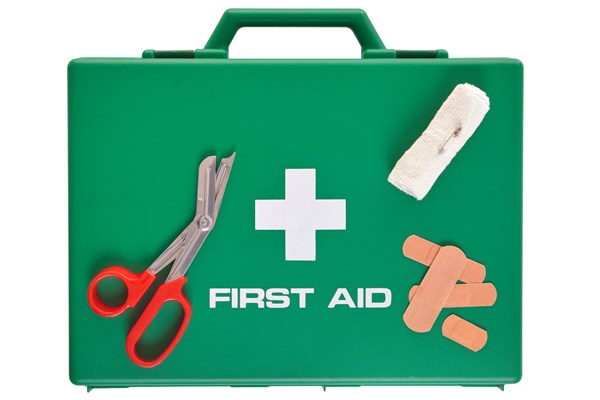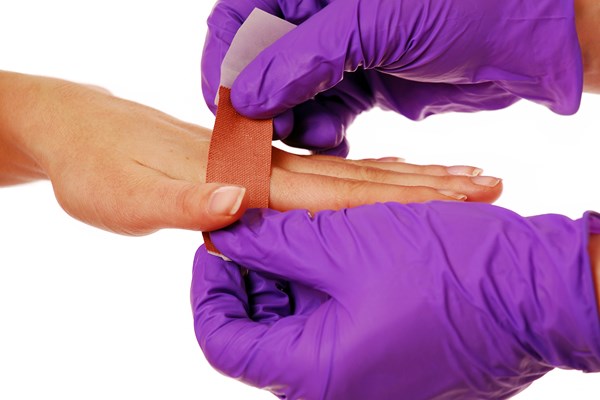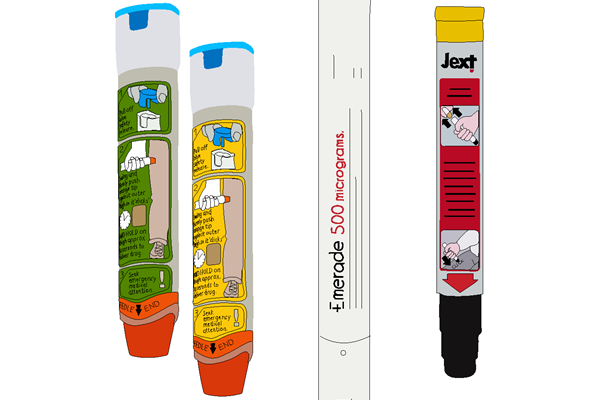First Aid Kits: Being Aware of Expiry Dates
The contents of your first aid kit should be based on your assessment of first aid requirements. For example, working with hazardous substances, effective eye wash is essential. Having a First Aid Kit is one thing, but making sure it is fully stocked and up to date, means you are fully prepared for a first aid emergency.
A basic first aid kit might contain the following:
- A leaflet or manual with general guidance on first aid
- Individually wrapped sterile plasters of assorted sizes
- Sterile eye pads
- Individually wrapped triangular bandages
- Safety pins
- Sterile, individually wrapped wound dressings of various sizes
Disposable gloves

If you are buying a kit, look for British Standards (BS) 8599, however there is no law requiring the first aid kit to meet these standards. The kit should contain what has been identified in your needs assessment.
There are Paediatric First Aid Kits readily available that meet the guidelines given by The Health and Safety Executive, PACEY and the Pre-School Learning Alliance; so you fully comply with the Early Years Framework Standards (EYFS).
It is so important to make sure your first aid kit is up to date and fully equipped, and although parts of the kit will last a long time, other components can expire and will need to be replaced.
Check the expiration date of your first aid kit regularly, as many items, particularly sterile ones, are marked with expiry dates and will not be fit for purpose. Certain materials are compromised in terms of their usability or sterility and would no longer be safe to use in an emergency.
Here are some of the items within a First aid kit that might expire:
- Medicine – all medicines have an expiration date and some can be harmful after this date. Be sure to only use medicines within the recommended dates.
- Bandages – over time, most adhesive bandages deteriorate and lose their adhesiveness; rendering them useless. They also lose their sterility, making them unsafe for use.
- Sterile Wipes and Cleaning Supplies – wipes and other wound cleaning supplies that have expired, can often lose their sterility. They can also dry out, making them useless in an emergency.
- Gloves – these can degrade over time, resulting in loss of protection for both the user and injured person from pathogen transfer.

Not all products have an expiry date, however most sterile items do. If you are unable to find the date or the product does not have one, it is recommended to check with the manufacturer.
A handy tip would be to note all the expiry dates within your first aid kit and set a reminder in a diary to help keep you in check.
Auto-injectors
There are various brands of adrenaline (epinephrine) auto-injectors, such as the more known brand EpiPen and these should be stored in a cool, dark place at room temperature, between 15-25°C. They should not be refrigerated, as temperatures below 15°C may damage the autoinjector mechanism.
Adrenaline autoinjectors (as well as other medication) should be kept out of reach of children, however they must be readily available when needed and not kept in a locked cupboard. An ASCIA Action Plan for anaphylaxis should also be stored with an adrenaline autoinjector.
The usual shelf life is between one to two years from the date of manufacture. It is important to note the date of expiry and replaced prior to this date and many manufacturers have a ExpiryAlert Service, which is encouraged to sign up for.
Adrenaline autoinjectors are single use devices and cannot be reused. We recommend to carry two autoinjectors, in case of emergency.

Asthma Inhalers
Asthma inhalers should be stored below 30°C and do not need to be refrigerated. Most inhales expire one year after they are issued, but storage can have an impact on their effectiveness. Take a note of the expiry date, especially if not using that often, and do not use after the expiration date.
The Health and Safety Executive (HSE) offer First Aid at Work guidance under The Health and Safety (First-Aid) Regulations 1981, of which every employer has an obligation to make adequate and appropriate first aid provisions for their workforce and a great source for resources, should you need guidance in this area.